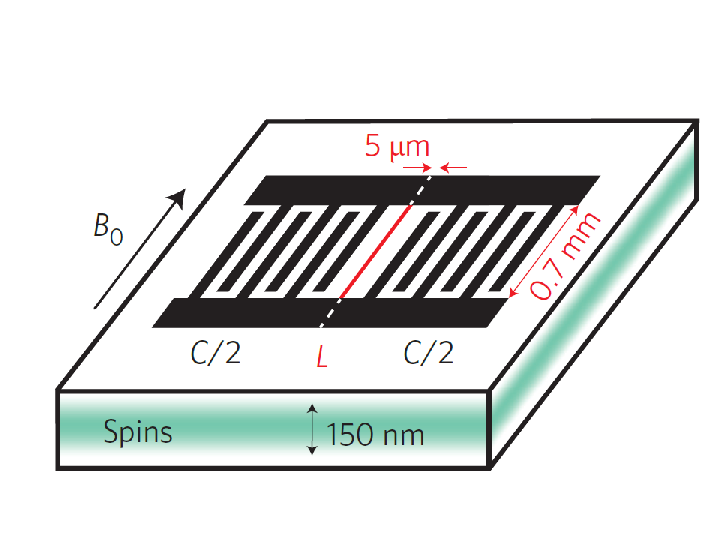Brian Julsgaard and Klaus Mølmer co-author Nature Nanotechnology article
Nature Nanotechnology article demonstrates record sensitive spin detection - a practical spin-off of research in quantum computing by Brian Julsgaard and Klaus Mølmer.

Several experimental research groups have explored a theory proposal, developed in Aarhus in 2010, to combine solid state spin systems and superconducting microwave circuits as memory and processing units in a quantum computer. Brian Julsgaard and Klaus Mølmer have collaborated closely with a group in Saclay, France, on how to practically transfer information at the single quantum level between the two systems. So far, this transfer has reached an efficiency in the laboratory of 1 % - too small for quantum computing purposes, but big enough that the signal from a few hundred spins can be amplified by the microwave circuit and unambiguously detected. Experiments, reported in Nature Nanotechnology on December 14, 2015, demonstrate this resolution on a small sample of bismuth atoms in a silicon crystal.
The signal has a frequency of 7.24 GHz and would be completely swamped by amplifier noise and thermal background radiation in a room temperature environment. By operating the amplifier in the quantum regime as an integrated component of the microwave circuit, positioned a few hundred nanometers from the spin sample at 12 mK temperatures, the experiments show many orders of magnitude improvement over previous experiments and the experiments bring promise that further refinements will reach the sensitivity to detect a single spin. Sensing of spins is used in many fields of science and medicine, for example in magnetic resonance imaging, and the new method paves the way towards application on nanoscale samples such as single cells, small molecular ensembles, nanoparticles and nanodevices.
